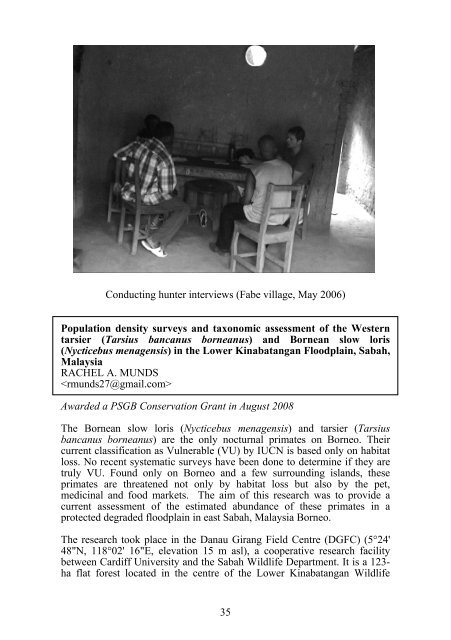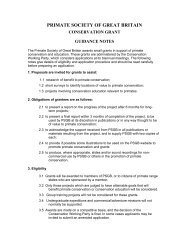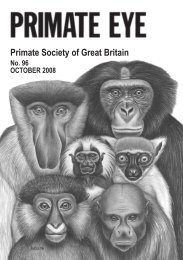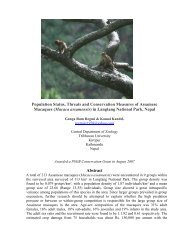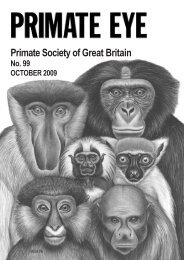2010 Vol 101.pdf (1.63mb) - Primate Society of Great Britain
2010 Vol 101.pdf (1.63mb) - Primate Society of Great Britain
2010 Vol 101.pdf (1.63mb) - Primate Society of Great Britain
Create successful ePaper yourself
Turn your PDF publications into a flip-book with our unique Google optimized e-Paper software.
Conducting hunter interviews (Fabe village, May 2006)<br />
Population density surveys and taxonomic assessment <strong>of</strong> the Western<br />
tarsier (Tarsius bancanus borneanus) and Bornean slow loris<br />
(Nycticebus menagensis) in the Lower Kinabatangan Floodplain, Sabah,<br />
Malaysia<br />
RACHEL A. MUNDS<br />
<br />
Awarded a PSGB Conservation Grant in August 2008<br />
The Bornean slow loris (Nycticebus menagensis) and tarsier (Tarsius<br />
bancanus borneanus) are the only nocturnal primates on Borneo. Their<br />
current classification as Vulnerable (VU) by IUCN is based only on habitat<br />
loss. No recent systematic surveys have been done to determine if they are<br />
truly VU. Found only on Borneo and a few surrounding islands, these<br />
primates are threatened not only by habitat loss but also by the pet,<br />
medicinal and food markets. The aim <strong>of</strong> this research was to provide a<br />
current assessment <strong>of</strong> the estimated abundance <strong>of</strong> these primates in a<br />
protected degraded floodplain in east Sabah, Malaysia Borneo.<br />
The research took place in the Danau Girang Field Centre (DGFC) (5°24'<br />
48"N, 118°02' 16"E, elevation 15 m asl), a cooperative research facility<br />
between Cardiff University and the Sabah Wildlife Department. It is a 123-<br />
ha flat forest located in the centre <strong>of</strong> the Lower Kinabatangan Wildlife<br />
35


